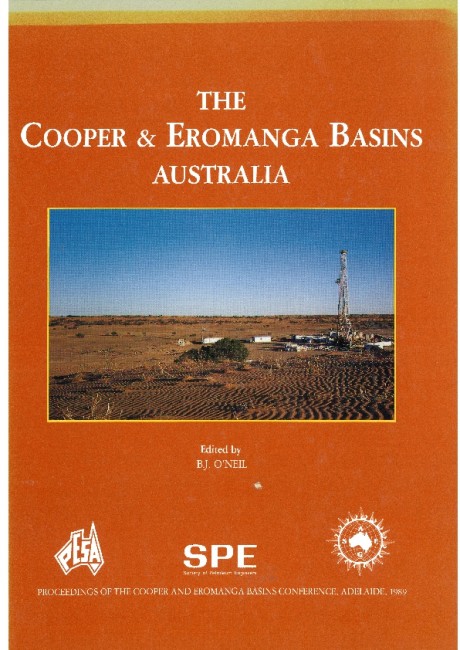Publication Name: The Cooper & Eromanga Basins Australia
Authors: M. Flynn
Date Published: June 1989
Number of Pages: 23
Reference Type: Book Section
Abstract:
Geophysical data suggest the presence of a possible buried meteoritic impact site, known as the MulkarraStructure, within the Mulka Block of Petroleum Exploration Licences 5 and 6 in the western Eromanga Basin South Australia. An anomalous zone, 17 km in diameter, of approximately 600 m of intensely faulted/fractured Eromanga Basin sediments is observed at depth from seismic data, and exhibits a circular residual
negative gravity anomaly. The presence of continuous reflectors above fault blocks containing sediment
thicknesses equivalent to those outside the anomalous area implies a time specific event that is dated as the Middle Albian of the Late Cretaceous, or 105 ?3 Ma. The feature is unique in that it retains what is known as a simple type crater morphology yet is of comparable size to what are called complex type craters, a possible result of impact within mechanically incompetent marine shales. The Crater has been preserved following post-impact marine sedimentation and has only been detected on seismic and gravity data.
The documented impact craters of Viewfield, Canada,and Red Wing Creek, USA, display similar circular seismic
properties to the Mulkarra Structure. These craters are large hydrocarbon producers within the petroliferous Williston Basin and possess massive oil reserves within their fractured sediments. Current petroleum exploration data within the Mulkarra area is scarce and does not indicate large volumes of hydrocarbons, primarily due to lack of maturity of potential source rocks. A positive geothermal anomaly is present at Red Wing Creek, induced possibly by the high temperatures generated upon impact or the greater mobility of heat-carrying groundwaters percolating through the fractured sediments of the impact site. The possibility, therefore, exists for an increase in source rock maturity and a similar type oil play within the fractured Eromanga Basin sediments of the Mulkarra Structure.


